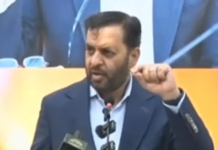MANCHESTER, NOV 24: A three-year-old boy from California has amazed doctors in Manchester after becoming the first patient in the world with Hunter syndrome to receive a pioneering gene therapy.
A year into the treatment, young Oliver Chu now appears to be developing normally — a result medical experts had once only hoped for.
Oliver was diagnosed with Hunter syndrome, or MPSII — a rare inherited disorder that damages the body and brain over time. In its most severe form, the disease is often described as a “childhood dementia,” and many patients do not survive beyond their teenage years. Before treatment, Oliver’s body was unable to produce iduronate-2-sulfatase (IDS), a vital enzyme that keeps cells healthy.
Family confronts the diagnosis
Oliver’s parents, Jingru and Ricky, say the diagnosis of both their sons came as a tremendous shock.
Skyler, Oliver’s older brother, also has the condition, though his early developmental challenges were initially attributed to being born during the Covid period.
“When you find out about Hunter syndrome, the doctor tells you not to search online,” Ricky recalls. “But you look anyway — and you fear the worst.”
BBC’s first meeting with Oliver and his father came in December 2024 at Royal Manchester Children’s Hospital. On that day, doctors began the crucial process of removing stem cells from Oliver’s blood.
Consultant paediatric haematologist Dr Claire Horgan explained that his blood was passed through a machine to collect specific stem cells, which would then be genetically modified.
Before this experimental therapy, the only available medicine was Elaprase — an extremely costly enzyme replacement therapy costing around £300,000 per patient each year. Although it could slow physical symptoms, it could not cross the blood-brain barrier, leaving cognitive decline untreated.
Oliver’s harvested stem cells were transported to Great Ormond Street Hospital in London for genetic modification. Scientists inserted a working IDS gene into a harmless virus designed to deliver the missing instructions into each stem cell.
Dr Karen Buckland from GOSH said the goal was for Oliver’s bone marrow to repopulate with modified cells that could finally produce the missing enzyme.
Months later, Oliver returned to Manchester for his gene-edited cells to be infused back into his body.
His mother, Jingru, held him gently as researchers removed a small infusion bag—containing around 125 million modified stem cells—from a cryopreservation tank. Nurses warmed the fluid, drew it into a syringe, and slowly injected it through a catheter in his chest. Oliver, used to hospitals, wriggled and watched cartoons as the infusion took place, unaware of the medical milestone unfolding.
Second dose and life-changing chance
An hour later, he received a second identical infusion. And just like that — in a process lasting minutes — the gene therapy was complete.
Despite its simplicity in appearance, the ambition behind the treatment is extraordinary: a one-time procedure intended to halt a progressive, fatal disease.
A year after starting the therapy, Oliver now shows signs of normal development, something doctors once believed nearly impossible.
Prof Simon Jones, co-leading the clinical trial, said: “I’ve been waiting 20 years to see a boy like Ollie doing as well as he is. It’s incredibly exciting.”
Oliver is the first of five boys worldwide to receive this treatment — and his progress is offering hope to families facing the same diagnosis.
“Every time we talk about it, I want to cry because it’s just so amazing,” Oliver’s mother, Jingru, says.
For the Chu family, the therapy has changed what once felt like an inevitable, heartbreaking future.

















